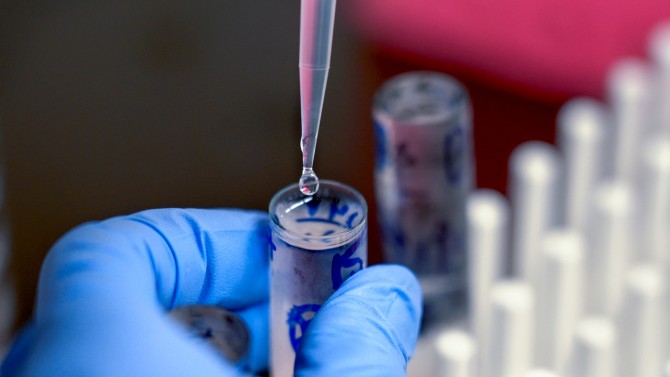Martha Field, an assistant professor in the College of Human Ecology, is studying the metabolic pathways that lead to the creation of erythritol, a byproduct of the body’s synthesis of glucose.
New metabolic discovery may inform heart disease, diabetes solutions
By Blaine Friedlander
Science may be inching closer to thwarting obesity, heart disease and Type 2 diabetes, as Cornell biochemists have uncovered a key step in how the human body metabolizes sugar, according to new research published in the Journal of Biological Chemistry.
Martha S. Field, assistant professor of nutritional sciences, has further characterized this human metabolic pathway, by identifying two enzymes called sorbitol dehydrogenase (SORD) and alcohol dehydrogenase 1 (ADH1) that convert the sugar erythrose into erythritol.
This reaction represents the final step in the conversion of glucose to erythritol in human metabolism.
Scientists had previously thought that plants and microbes could turn erythritol from glucose into a sugar alcohol. The 2017 discovery by Patricia Cassano, professor of nutritional sciences, that humans have this capability unveils possible solutions for persistent human maladies.
“Your normal diet contains fruits, vegetables and beans and you will inevitably ingest sugar alcohols,” said Field, who is senior author on the paper. Knowing how the body makes sugar alcohols, she said, opens an array of new possibilities for treatment and prevention of heart disease and Type 2 diabetes.
Previous research had shown that elevated levels of erythritol in blood plasma are associated with future increased fat storage and weight gain, so erythritol serves as a biomarker for weight gain, possible heart disease and diabetes.
“That raises the question: Are elevated levels of erythritol in plasma a causal factor in weight gain and, if so, could this newly discovered metabolism be a path toward intervention in our fight to combat obesity?” Field said.
Doctors and scientists have long known that “central adiposity” gain refers to an increase in fat mass around the mid-section – the so-called “beer belly” – and that this “visceral adipose,” stored in the abdomen, is metabolically active and associated with risk for heart disease and Type 2 diabetes, said Field.
Young adults who exhibited central adiposity gain over the course of 35 weeks had plasma erythritol levels 15-times higher at baseline than those with stable adiposity over the same period. Field said erythritol also was identified as one of seven metabolites in plasma that predicted the onset of Type 2 diabetes – over a 20-year period in adults – from a heart disease risk study.
“Taken together,” she said, “these data suggest that plasma erythritol may not simply reflect elevated blood glucose, but rather may signal or lead to metabolic changes that cause weight gain and/or diabetes. … [U]nderstanding genetic and metabolic differences associated with obesity and designing successful interventions is imperative.”
In addition to Field, the paper, “Unexpected Roles for ADH1 and SORD in Catalyzing the Final Step of Erythritol Biosynthesis,” was authored by Lisa Schlicker (first author), Alexander Heinz and Karsten Hiller of Technische Universitat Braunschweig, Germany; Doletha Szebenyi, director, MacChess, Cornell; and Cornell doctoral student Semira Ortiz.
Media Contact
Get Cornell news delivered right to your inbox.
Subscribe

